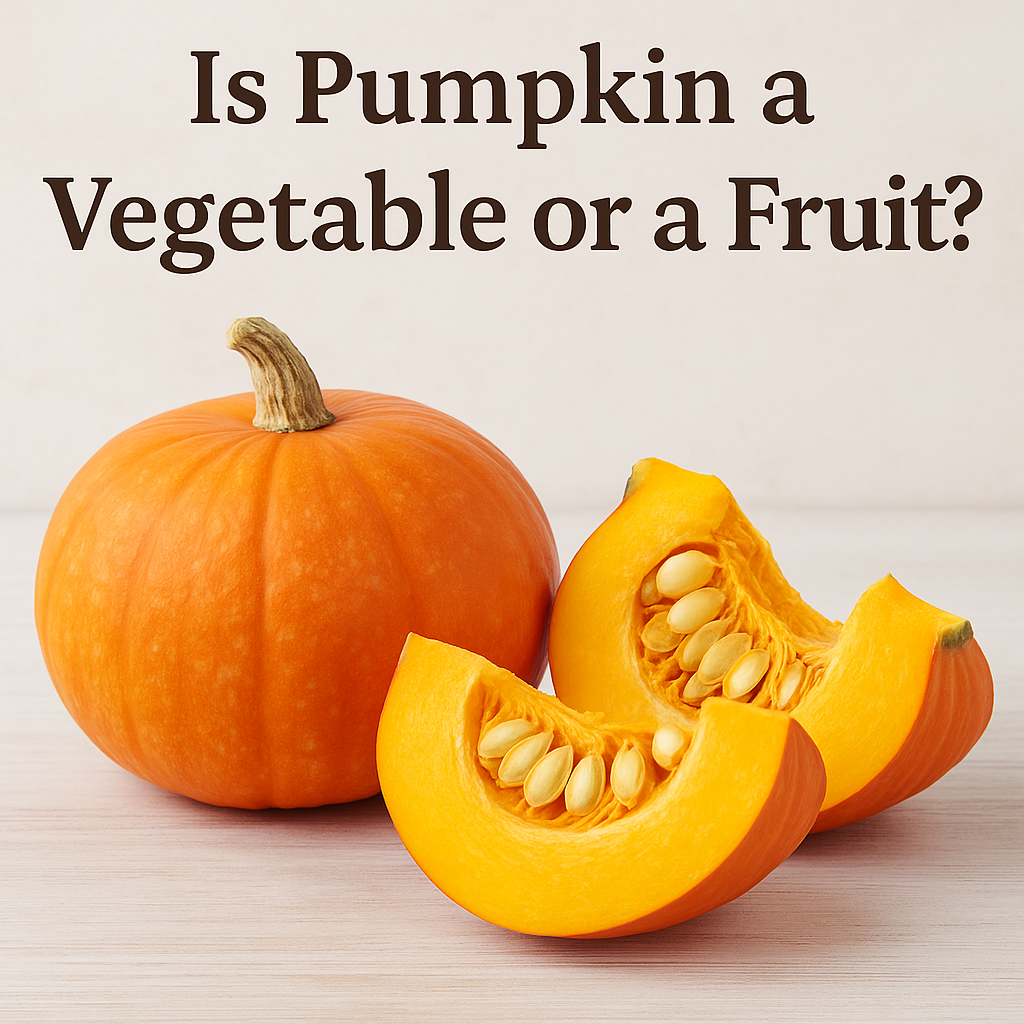Is Pumpkin a Vegetable or a Fruit? Nutrition, Health Benefits, and More

Pumpkins are everywhere in the fall, but when it comes to nutrition and cooking, people often wonder: is pumpkin a vegetable, a fruit, or even a carb? Let’s clear up the confusion and explore why pumpkin is not only delicious but also one of the healthiest foods you can add to your diet.
Does Pumpkin Count as a Vegetable?
Botanically, pumpkins are fruits because they develop from the flower of the plant and contain seeds.
Nutritionally and in the kitchen, however, pumpkin is treated as a vegetable. It’s prepared in savory dishes, roasted, pureed, or added to soups and stews — just like carrots, squash, or potatoes. So yes, for your diet, pumpkin counts as a vegetable serving.
Is Pumpkin a Carb or a Vegetable?
Pumpkin is a starchy vegetable, meaning it contains more carbohydrates than leafy greens. A one-cup serving of cooked pumpkin has about 12 grams of carbs. That’s less than a potato, making pumpkin a lighter carb choice that still delivers fiber and nutrients.
Does Pumpkin Count as a Vegetable Serving?
Yes. A half-cup of cooked pumpkin counts as one vegetable serving. Whether you roast it, mash it, or use it in soup, pumpkin contributes to your daily veggie intake.
What Makes Pumpkin Healthy?
Pumpkin is packed with nutrients:
- Vitamin A (beta carotene): supports eye health and immunity.
- Vitamin C: helps with collagen production and immune defense.
- Potassium: good for heart and muscle function.
- Fiber: supports digestion and satiety.
It’s low in calories and nutrient-dense, making pumpkin one of the most healing and superfood-level vegetables.
What Is the Healthiest Vegetable?
There’s no single “healthiest” vegetable, but pumpkin holds its own among nutrition powerhouses. Leafy greens like spinach and kale, cruciferous veggies like broccoli, and orange veggies like pumpkin and carrots are consistently rated as some of the best foods you can eat every day.
What Are the Best Foods to Eat Daily?
If you want a well-rounded, healthy diet, include:
- Leafy greens — spinach, kale, collards.
- Colorful veggies — pumpkin, carrots, peppers.
- Legumes — beans and lentils for fiber and protein.
- Whole grains — oats, quinoa, brown rice.
- Berries and fruits — blueberries, apples, oranges.
Pumpkin is part of the “colorful veggies” group, and its nutrients make it an excellent choice year-round.
Key Takeaway
Pumpkin is botanically a fruit, but nutritionally a vegetable. It’s versatile, low in calories, and rich in vitamins, fiber, and antioxidants. Whether you’re counting servings of vegetables or looking for healthy carbs, pumpkin deserves a regular spot on your plate.
Looking for more pumpkin-inspired ideas? Explore our Pumpkin Recipes and seasonal guides for cozy, nutritious meals.